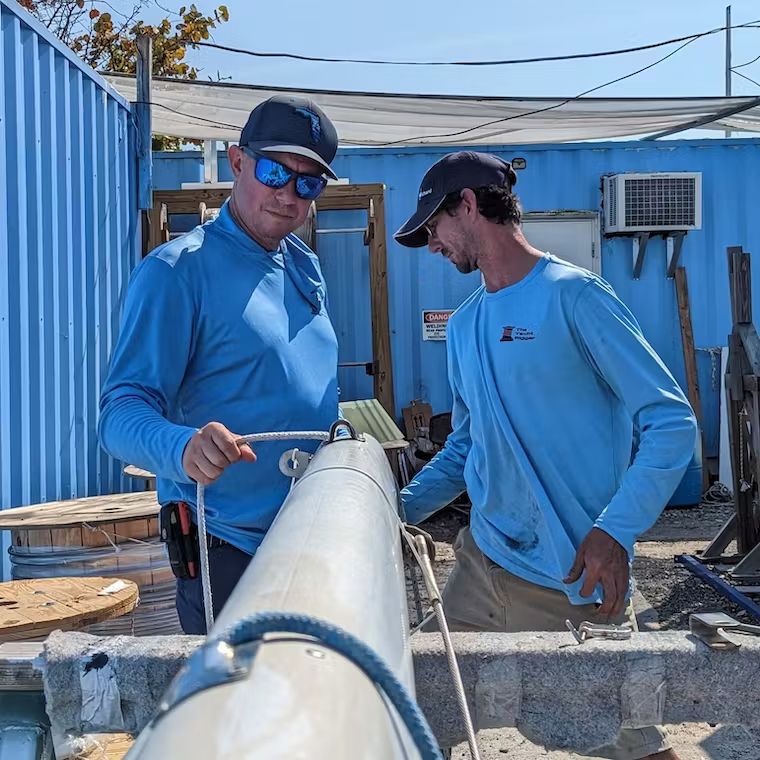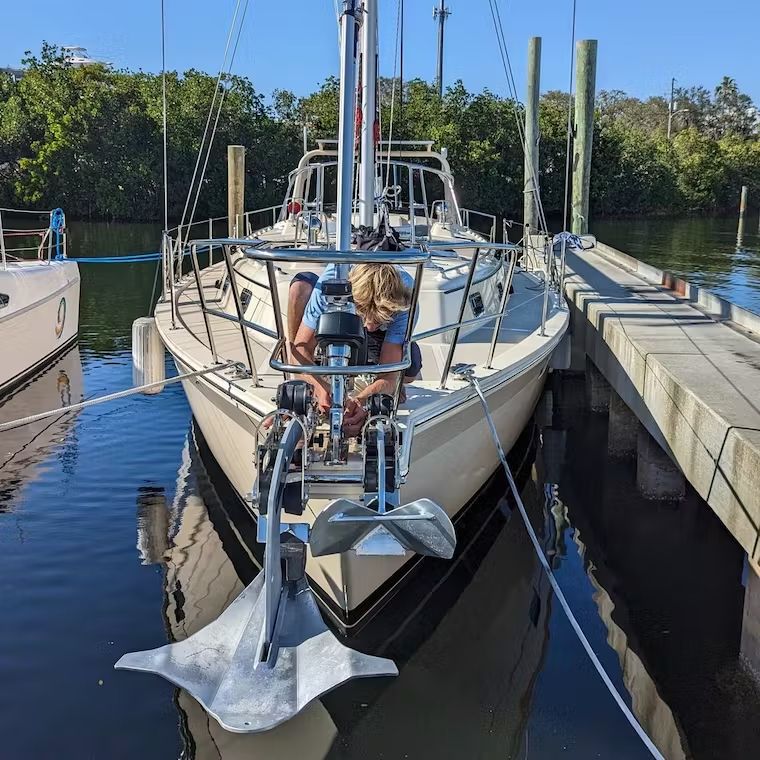SPRING SALE: Receive $100 Off Per Container
We love following our decommissioned shipping containers as they begin their new land-based futures. Some find their way to the mountains, others to farms, and in the case of our next ‘Inside The Box’ feature, a few make their way to a coastal boatyard amongst others who spent their lives maneuvering the natural forces found at sea.
From Sea To The Worksite: Containers Reinventing Themselves for Land Based Purpose
Off the west coast of Florida, we find our next Eveon customer, water enthusiasts, and obsessed boaters, The Yacht Rigger, owned by Stephen Lloyd, Brian Ford, and Andre Cormier. Located in St. Petersburg, Florida, the company is dedicated to marine upgrades and maintenance of sail and power boats, including a team of craftsmen specialized in welding, fabricating, electrical, and rigging. The business services include but should not be limited to; Marine Solar & Electrical Systems, aluminum and stainless metal fabrication, Standing Rigging Replacement, Winch Servicing, Splicing, Hardware Installation, New Sails and sail covers, Marine parts distribution, and more. The team is committed to quality customer service and attention to detail. Preventative maintenance and timely upgrades are essential to safety out on the water.
Products Well Made Can Continue To Be Functional For Years To Come
Like Eveon Containers, The Yacht Rigger, believes that quality pieces and parts that are well-maintained and properly cared for can continue to be highly functional for years to come. A sport and hobby that brings much peace and solidarity, takes an active team to properly care for and prepare the equipment.
As a vital part of sailboat safety, sailboat rigging is a specialized industry that requires both sailing knowledge and technical background to understand the complex systems that make a sailboat mast and sails function.

South African expat and lead rigger Stephen Lloyd and his team specialize in all types of yacht rigging. Their teamwork and talents provide comprehensive services tailored around their clients’ needs servicing and improving cruising and racing boats.
“Shipping containers are a simple and cost-effective solution for us to grow piece by piece, as needed, with an incredibly solid structure that lends well to many applications.” Stephen Llyod explains.
For more information on the various ways that shipping containers can help business solutions at a fraction of the cost of temporary monthly storage units click here.

Frequently Asked Questions
Yes, containers can be stacked, but there are rules to follow to do it secure and safely!
One great feature of shipping containers is that they can be stacked up to eight containers high, even when fully loaded. But of course, to do it safely, you have to follow a few simple rules, like stacking the containers with corner posts aligned and securing the containers with twist locks. It is advised that containers of the same size are stacked since they will be more secure. There are companies out there that have equipment to handle stacking. Please consult an expert before attempting.
A common misconception is that the shipping container, invented by Malcom McLean to streamline and improve the efficiency of transporting goods, is a solid box. However, the floor of a container is not a single piece of solid metal or wood. Instead, it consists of marine-grade plywood laid over Corten steel-reinforced beams, providing both durability and structural integrity.
Corten steel, which is the same metal used to make bridges, roofs, fencing and transmission towers, is a high-strength steel alloy that forms a rust-like appearance when exposed to the elements. This makes it particularly well-suited for use in environments where durability & resistance to corrosion are essential. The Corten Steel beams run horizontally along the entire bottom of the container like a spine, this design with the metal cross members is primarily for structural integrity, weight reduction, and efficient load distribution.
When combined with Corten steel, Marine-grade Plywood flooring is durable and able to withstand the harsh conditions whether on land or sea.
Why Are Shipping Container Floors Made With Crossbeams:
- Strength & Load Bearing: The cross members act like the vertebrae of a spine, providing structural strength while allowing the floor to support heavy loads. This design helps distribute weight evenly across the length and width of the container, preventing excessive stress on any single point.
- Weight Reduction: A solid metal bottom would significantly increase the container’s weight, making transportation more costly and inefficient. By using a frame structure with wooden or composite flooring panels, the container remains strong yet lightweight. Cost Efficiency: Building a container with a solid steel bottom would require more material, increasing production costs. The current design uses a combination of steel beams and plywood or bamboo flooring, balancing strength and affordability.
- Forklift & Handling Accessibility: The gaps between the cross members provide access points for forklifts to lift and transport the container more efficiently.
- Flexibility & Shock Absorption: Much like a spine, the cross-member structure allows slight flexing under heavy loads, preventing damage to the cargo and the container itself. A rigid solid metal bottom could be more prone to cracking or warping under stress. This design ensures that shipping containers remain durable, cost-effective, and easy to transport while maintaining the necessary strength for carrying heavy cargo.
The Shipping Container Floor
The shipping container floor constructed from marine-grade plywood, is engineered to resist water, rot & fungal growth, making it ideal for environments subject to moisture and fluctuating temperatures. In a shipping container, marine-grade plywood flooring provides a strong, stable surface that can handle heavy cargo while offering better insulation compared to steel. Its high resistance to moisture also makes it less likely to warp or degrade under wet conditions, ensuring long-lasting performance for storage.
The numerous layers of plywood pressed together allowed it to take hits and blows without cracking. Some peeling is okay and won't affect the effectiveness if minimal. When combined with Corten steel, Marine-grade Plywood flooring is durable and able to withstand the harsh conditions whether on land or sea. Making the shipping container a perfectly functional partner in the field, worksite or farm.
Absolutely, you have the option to select your preferred delivery date during checkout. Once your order is placed, our driver will reach out within 48 hours to coordinate scheduling and confirm the delivery dates. Your schedule and time are important to us, our carrier will work with you directly to accomidate the best delivery window for you.


